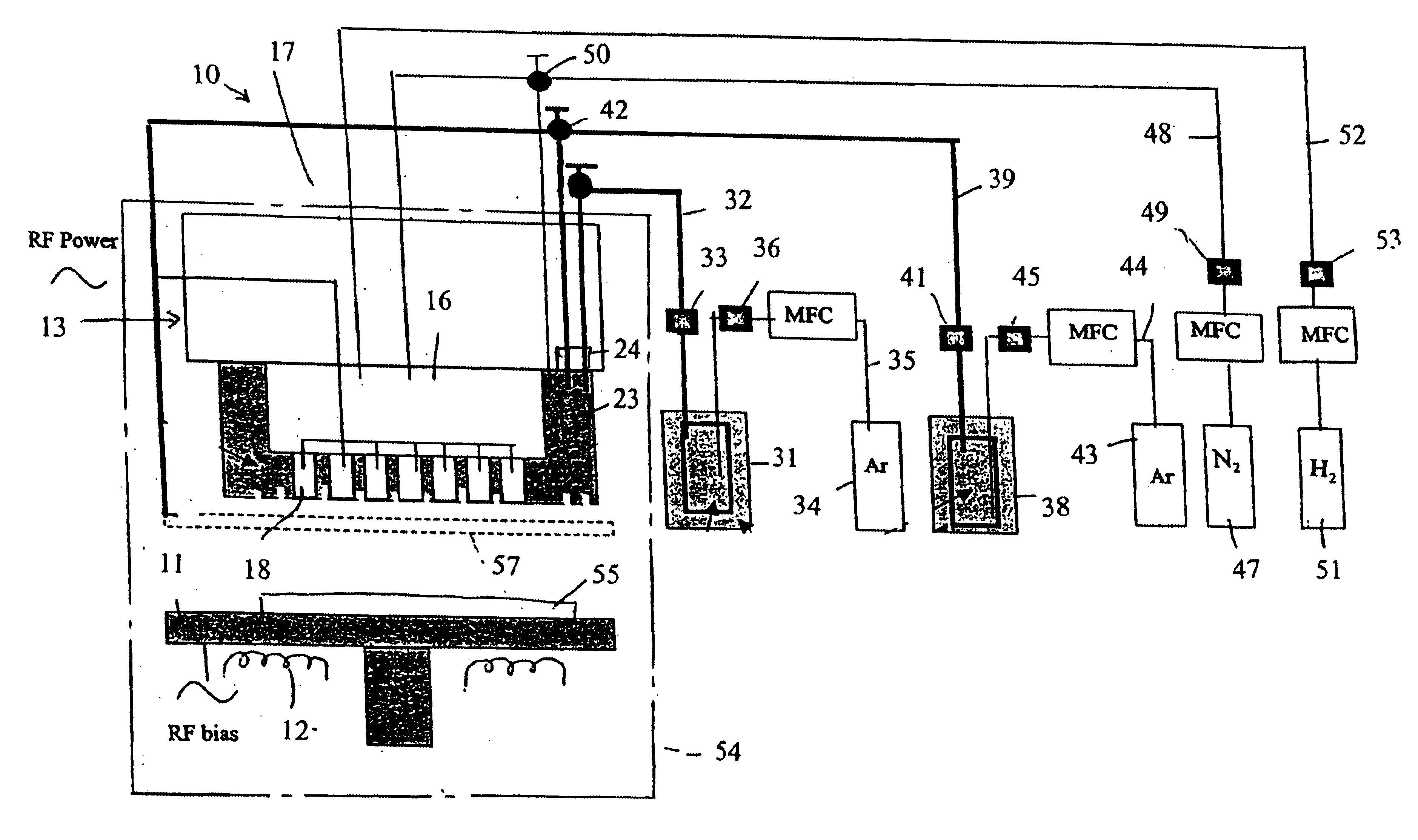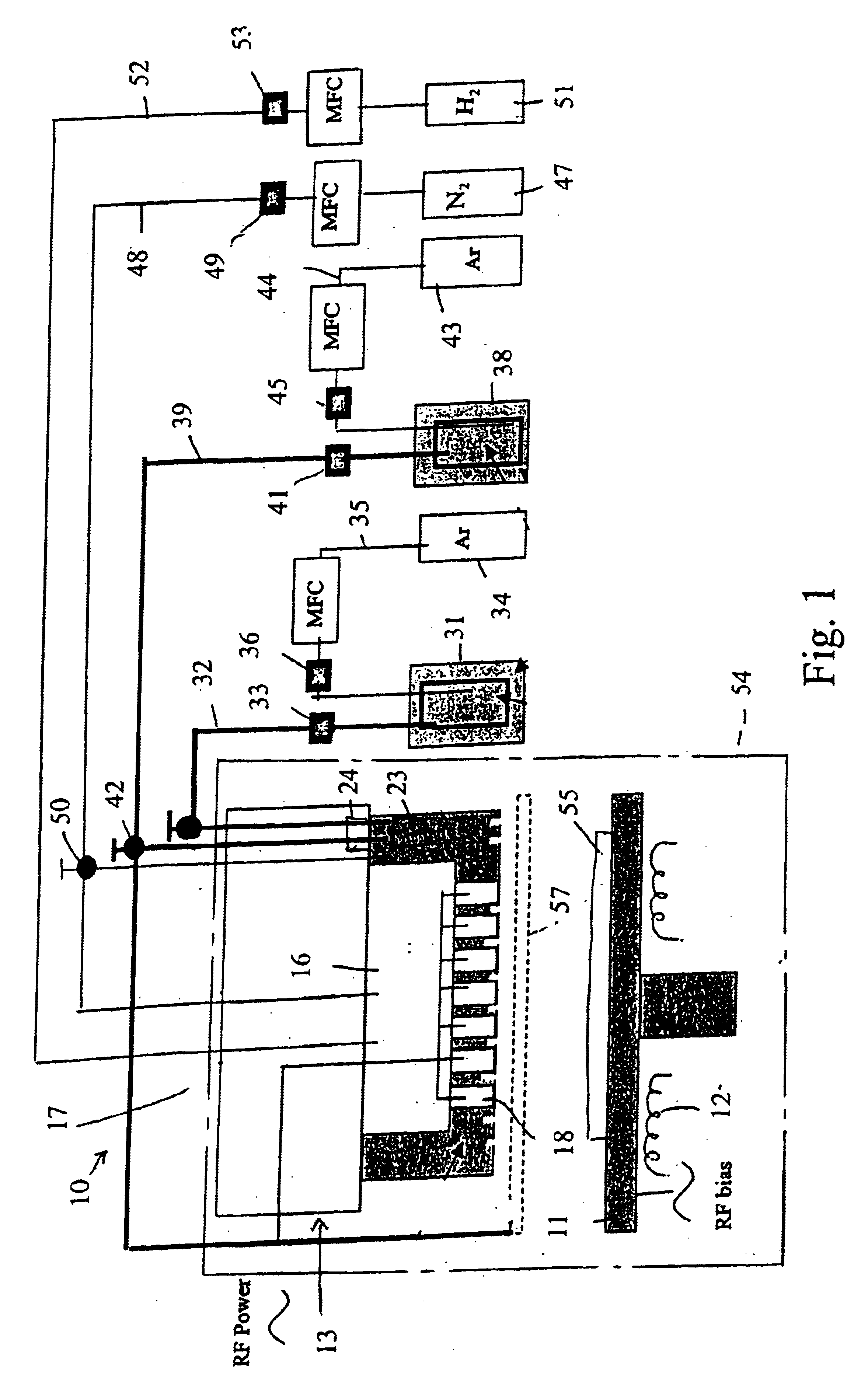System and method of producing thin-film electrolyte
a thin-film electrolyte and electrolyte technology, applied in the direction of non-aqueous electrolyte cells, sustainable manufacturing/processing, flat cell grouping, etc., can solve the problems of inability to use lithium metal as the anode, limited operating temperature range (10 to 70° c.) and market access still hindered
- Summary
- Abstract
- Description
- Claims
- Application Information
AI Technical Summary
Benefits of technology
Problems solved by technology
Method used
Image
Examples
example i
In one experiment, lithium tert-butoxide (LiTBO) and triethylphosphate OP(OC2H3)3 (TEPO) were used as lithium and phosphate precursors, respectively. The bubblers with lithium and phosphate precursors were maintained at 115 and 20° C., respectively. Argon was used as the carrier gas and the flow rates were set at 175 and 3 sccm for lithium and phosphate precursor, respectively. The lithium and phosphate bubbler pressures were 9.1 and 3.8 Torr, respectively. The precursors were introduced into the chamber through the secondary plenum. The gas lines 32 and 39 and showerhead or bottom plate 21 were heated to 120° C. to prevent condensation. Nitrogen was used as the plasma gas with a flow rate of 90 sccm. A small amount of hydrogen (1 sccm) was added to nitrogen gas to minimize the carbon content in the film. Too much H2 will largely reduce the deposition rate and have a detrimental effect on film properties. The gold-coated ceramic substrate (Al2O3), produced by Coors Ceramics Company ...
example ii
In another experiment, similar deposition parameters were used as those described in Example I except that the substrate temperature was set at 160° C. The XPS spectrum of the film is shown in FIG. 10. The film growth rate is 36 Å / min and exhibits an ionic conductivity of 3.5*10−7 S / cm.
example iii
In another experiment, similar deposition parameters were used as those described in Example I except that the lithium and phosphate bubbler pressures were 10.7 and 8.6 Torr, respectively. The film growth rate was increased to 71 Å / min. The impedance spectrum of the film is shown in FIG. 11. The ionic conductivity of film dramatically increased to 1.9*10−6 S / cm.
PUM
| Property | Measurement | Unit |
|---|---|---|
| operating temperature | aaaaa | aaaaa |
| crystalline temperature | aaaaa | aaaaa |
| conductivity | aaaaa | aaaaa |
Abstract
Description
Claims
Application Information
 Login to View More
Login to View More - R&D
- Intellectual Property
- Life Sciences
- Materials
- Tech Scout
- Unparalleled Data Quality
- Higher Quality Content
- 60% Fewer Hallucinations
Browse by: Latest US Patents, China's latest patents, Technical Efficacy Thesaurus, Application Domain, Technology Topic, Popular Technical Reports.
© 2025 PatSnap. All rights reserved.Legal|Privacy policy|Modern Slavery Act Transparency Statement|Sitemap|About US| Contact US: help@patsnap.com



